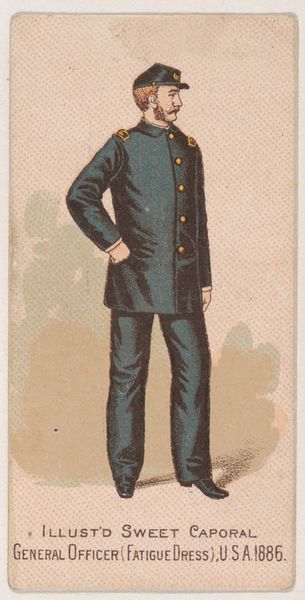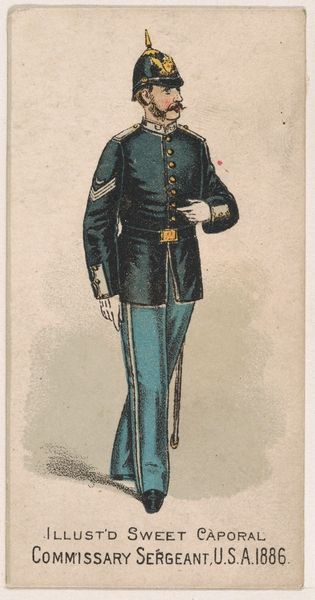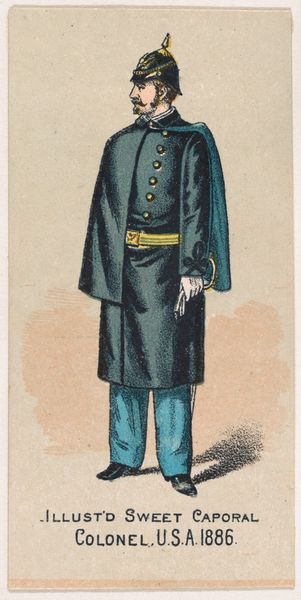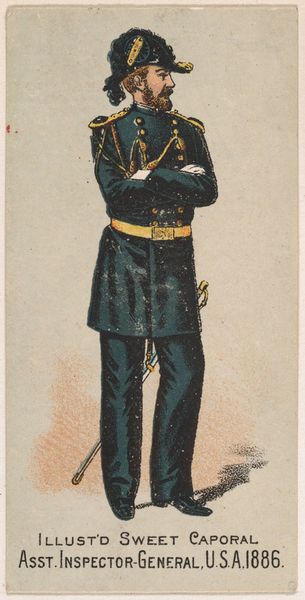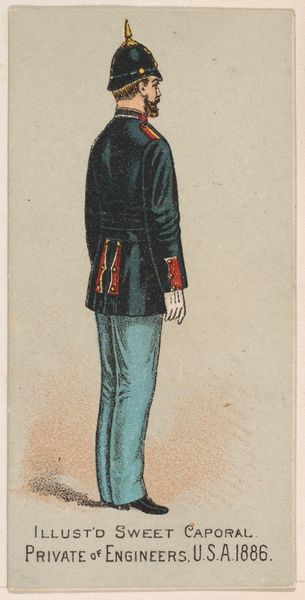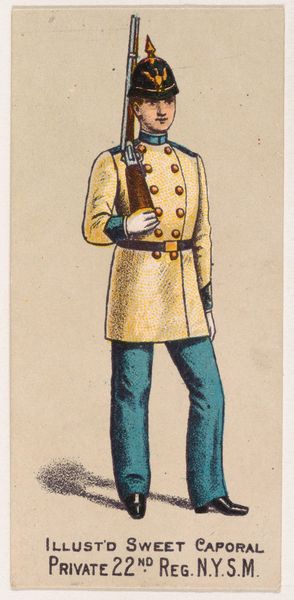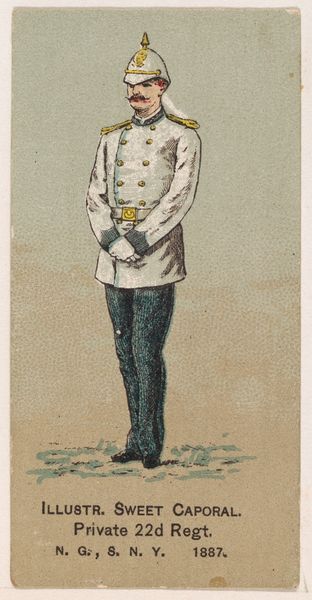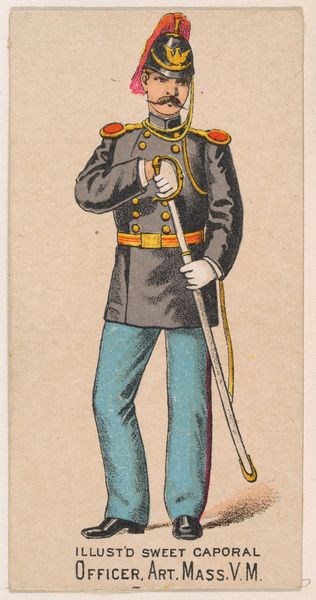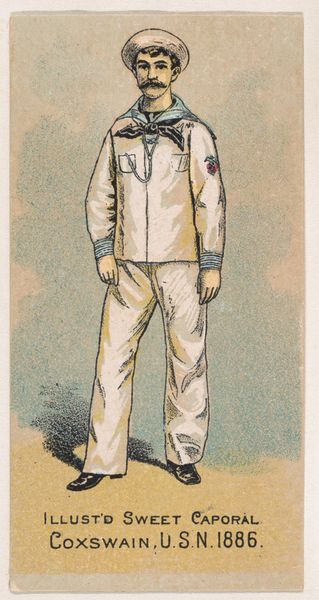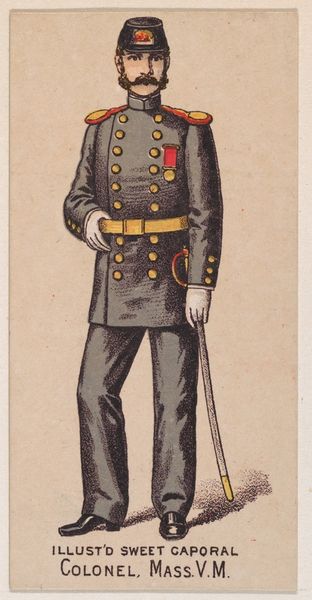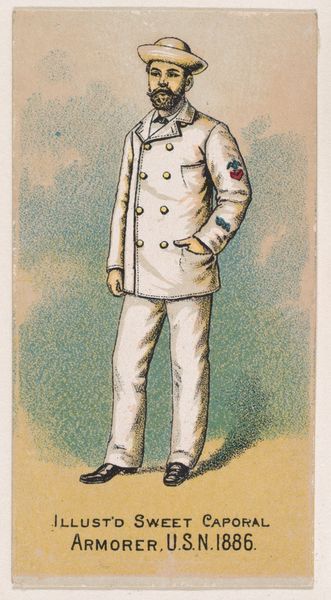
Fatigue Dress, Artillery, United States Army, 1886, from the Military Series (N224) issued by Kinney Tobacco Company to promote Sweet Caporal Cigarettes 1888
0:00
0:00
drawing, print
#
portrait
#
drawing
# print
#
caricature
#
men
#
genre-painting
#
profile
#
realism
Dimensions: Sheet: 2 3/4 × 1 1/2 in. (7 × 3.8 cm)
Copyright: Public Domain
Editor: This drawing from 1888, published by Kinney Tobacco Company, depicts an artilleryman in fatigue dress. It’s part of a series of collectible cards promoting Sweet Caporal Cigarettes. What strikes me is the somewhat idealized and detached presentation; it's both realistic and a little… staged, wouldn't you say? How should we interpret a piece like this? Curator: Well, it's crucial to consider the socio-political context. These cigarette cards weren’t simply about selling tobacco; they were tools for shaping public perception of national identity and military power. Notice how the uniform is meticulously detailed, yet the soldier remains generic, almost a symbol. What does this standardization suggest about the era’s view of the military? Editor: It feels like the individual is being subsumed by the role, perhaps emphasizing uniformity and discipline within the armed forces. Is there also a possible consumer element to consider, related to advertising techniques? Curator: Precisely. This card, part of a larger series, presented a curated image of military life to the public. It promoted a vision of strength and order, connecting the consumption of cigarettes with patriotic values. It's a subtle form of cultural indoctrination, embedding ideas about masculinity and national service within everyday consumer habits. Were these cards trying to glamourize army lifestyle? Editor: So it’s less about portraying an individual soldier and more about promoting an idea of military service itself, linked to consumerism. Very interesting how the humble cigarette card became a vehicle for broader social messaging! Curator: Exactly! Thinking about this art object, helps to explore the complex relationship between commerce, patriotism, and the visual construction of national identity. The artwork's presence here today reveals more about these concepts.
Comments
No comments
Be the first to comment and join the conversation on the ultimate creative platform.
